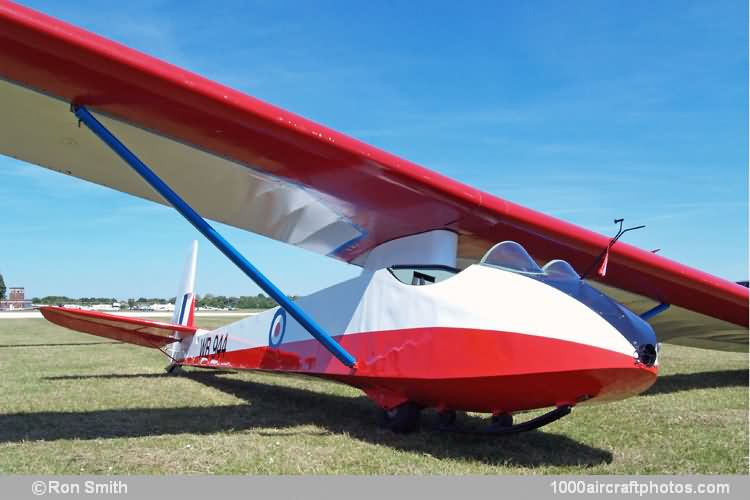The production version was the slightly modified T.21B, of which the first flew in December 1947. During 1949, the Type 21B went into service with the RAF Reserve Command and >Air Training Corps, designated Sedbergh TX.Mk.1. Eventually 226 T.21Bs were built, including 93 for the RAF/ATC (of which nineteen were built by Martin Hearn Ltd at Hooton Park, Cheshire, serialed WB794 to WB791, WB793, c/n MH001 to MH019), while India received 27. After struck off charge, most RAF/ATC Sedbergh's came on the British Gliding Association (BGA) registry and received a unique BGA identification trigraph.
The pictured aircraft was built for the RAF/ATC, serialed WB944 it was delivered on November 22, 1949. On May 7, 1985 it was sold and it came on the BGA register as BGA 3160 and received the identification trigraph FCT. It is kept airworthy at Bicester, Oxfordshire. The following data is transcribed from Jane's All the World's Aircraft 1952-53."
Type: Two-seat Training Glider.
Wings: High-wing braced monoplane. Single-spar torsion-resisting nose-box structure with light secondary spar to carry ailerons. Wood construction with fabric covering aft of main spar. Single bracing struts on each side.
Fuselage: Of mixed construction. Forward portion back to two main wing attachment-frames of wood stressed skin construction, remainder of fabric covered girder construction.
Tail unit: Braced tail plane. Rudder and elevators are fabric covered. Span 12 ft 6.25 in (3.67 m).
Landing gear: Single central skid followed by single wheel. Spring tail-skid.
Accommodation: Open cockpit seating two side-by-side with dual controls. Provision for back-type parachutes. Two control columns and dual rudder pedals. Quick release and lift-spoiler controls placed centrally.
Equipment: Instruments include air-speed indicator, Kollsman sensitive altimeter. Cobb-Slater variometer and Pullen electric turn-and-bank indicator. Ottfur-type towing attachment mechanism.
